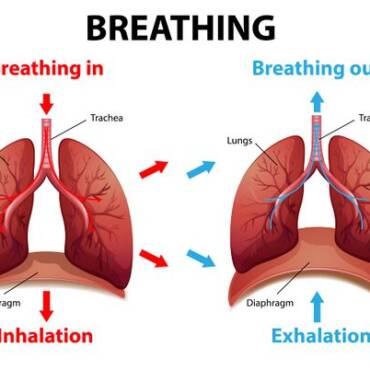Diaphragmatic breathing (often referred to as belly breathing), as the name suggests, engages the diaphragm, a powerful muscle, situated at the base of the lungs, to optimize your breathing.
It focuses on the controlled expansion of the diaphragm during inhalation, followed by a slow, controlled exhalation through pursed lips.
A study published in “Psychosomatic Medicine” found that diaphragmatic breathing significantly lowers cortisol levels, a stress hormone.
Research published in the “Journal of Clinical Psychology” indicates that diaphragmatic breathing can reduce anxiety symptoms. Anxiety disorders, affecting over 40 million adults in the U.S., are the most prevalent mental health conditions (ADAA).
It’s not just freedivers who benefit from this method; athletes, vocalists, and various performers also employ diaphragmatic breathing to enhance their respiratory capacity.
How to perform diaphragmatic breathing:
Find a comfortable space: Sit or lie down in a comfortable position.
Hand Placement: Place one hand on your chest and the other just below your ribcage, on your abdomen.
Inhale and Exhale Slowly: Inhale deeply through your nose, allowing your abdomen to expand for your chosen inhalation duration. Exhale slowly through pursed lips. You’ll find your stomach gently contracting.
When executed correctly, employing a 1:2 ratio (e.g., inhale for 5 seconds and exhale for 10 seconds), you should experience a sense of relaxation throughout your body and mind.
The objective is to avoid feeling lightheaded during practice. Experiment with the ratios listed below to determine the one that suits you best. Practice each ratio for around 2 mins until you find the one that suits you best.
- Smaller Body Type: Individuals with a smaller physique often find a 4-second inhalation followed by an 8-second exhalation ratio suits them well.
- Medium Body Type: Those with a medium build may opt for a 5-second inhalation paired with a 10-second exhalation ratio.
- Larger Body Type/Broad Shoulders: Individuals with a larger body type or broader shoulders may benefit from a 6-second inhalation followed by a 12-second exhalation ratio.
Diaphragmatic breathing, when personalized to your body type, can significantly improve your physical and mental well-being. Dedicate 10-15 minutes each day to practice diaphragmatic breathing.
Visit https://www.apneazone.club/a-freedivers-dream/ to explore more breathing techniques.





Add Comment